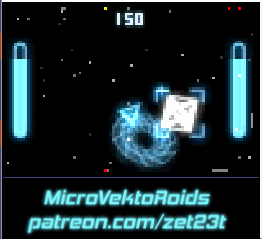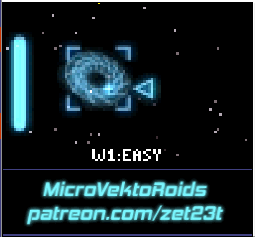1
Tiny Arcade & Pocket Arcade / Game in the works: MicroVektoRoids
« on: December 03, 2017, 04:37:09 PM »
Just wanting to raise your attention: I am working on a new game (for some time now) and I have also started a Patreon page where you can follow the progress and contribute a bit to the development of the game: http://patreon.com/zet23t
Here are a few in development screenshots:



As soon as it's ready I am providing the binaries for the SD card loading on that page too - though the game is open source and you can also have a look into the (somewhat ugly) source code: https://github.com/zet23t/MicroVectoroids
If you don't know patreon: It's a site where people can fund people or teams. In my case I am also looking for feedback .
.
Here are a few in development screenshots:



As soon as it's ready I am providing the binaries for the SD card loading on that page too - though the game is open source and you can also have a look into the (somewhat ugly) source code: https://github.com/zet23t/MicroVectoroids
If you don't know patreon: It's a site where people can fund people or teams. In my case I am also looking for feedback
 .
.